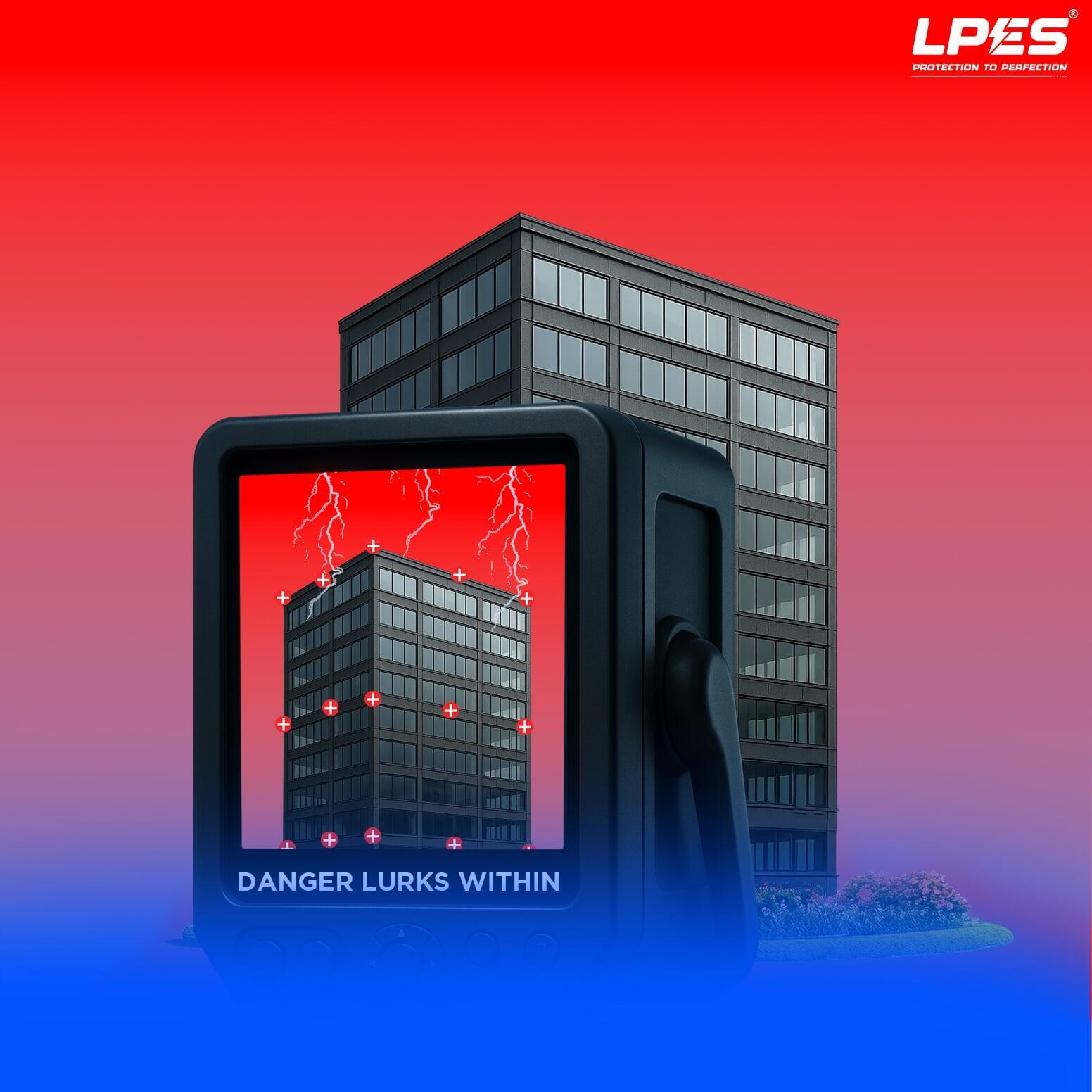
The Unseen Risk Inside Every
Building
From factories to hospitals, the greatest threats are often the ones you cannot see. A lightning strike miles away can induce surges that silently travel through power lines. In seconds, a server room, a PLC-controlled production line, or even a hospital ICU can fail.
The real safeguard is not a lone rod on a rooftop but a complete lightning arrester earthing system combined with certified lightning surge arrestors and integrated earthing and lightning protection. This layered approach ensures safety for both structures and the people inside.
Why Lightning Arrester Earthing Systems Matter
A building can only be considered safe if it has a reliable lightning arrester earthing system. The arrester itself intercepts the strike, but without low-resistance earthing, the energy finds unintended paths—damaging steel reinforcement, wiring, and equipment.
Key functions of a lightning arrester earthing system:
● Safely channels current from arresters into the soil.
● Prevents dangerous step and touch potentials.
● Ensures MCBs, RCCBs, and SPDs operate correctly.
● Provides a compliance trail for IS 3043 and IS 2309 audits.
At LPES, every lightning arrester for building project is designed as a system, not just an accessory, with engineered earthing grids and documented test results.
Beyond Strikes: The Role of Surge Protection
While lightning strikes are dramatic, it’s the surges that often cause the most financial damage. A complete system always includes lightning protection surge protection.
Without SPDs:
● A nearby strike can damage sensitive electronics.
● Voltage spikes can burn out switchgear and automation controls.
● Communication networks face downtime from induced surges.
With lightning protection surge protection:
● Type 1 devices absorb partial lightning current at the main incomer.
● Type 2 devices suppress residual surges at distribution boards.
● Type 3 devices protect terminals like servers, SCADA panels, and medical gear.
This integration of SPDs with earthing and lightning protection turns a vulnerable building into a resilient one.
Lightning Surge Arrestors – Silent Guardians
Every industrial control panel or data center rack deserves a lightning surge arrestor. These compact devices react within nanoseconds to clamp dangerous voltages and divert them to ground.
A well-chosen lightning surge arrestor:
● Is rated for appropriate discharge current (In/Imax).
● Has a low let-through voltage (Up) to protect sensitive equipment.
● Works seamlessly with the lightning arrester earthing system for full dissipation.
Our solutions include IEC 61643-11 certified lightning surge arrestors designed for Indian grid conditions, ensuring reliable protection under real-world stress.
Earthing and Lightning Protection – Two Systems, One Goal
Many installations treat earthing and lightning as separate topics. In reality, earthing and lightning protection must be engineered as a unified system.
Our approach:
1. Soil resistivity testing – to select the right electrode type.
2. Equipotential bonding – to eliminate hazardous potential differences.
3. Earthing grid design – multiple rods, chemical electrodes, or plate earthing tailored for soil conditions.
4. Integration with arresters – every down conductor terminates into the earthing system.
5. Surge pathway design – SPDs tied directly into the common earthing bus.
By integrating earthing and lightning protection, we make sure both people and assets are shielded from hidden electrical hazards.
Lightning Arrester for Building – Practical Applications
Every project type requires a tailored approach to lightning arrester for building solutions:
● Residential Towers → Compact lightning arrester earthing systems with chemical electrodes for small footprints.
● Factories → Class I protection with multiple down conductors and heavy-duty lightning surge arrestors.
● Hospitals → Layered lightning protection surge protection across ICUs, imaging, and power back-up.
● Data Centers → Ultra-low-resistance earthing and lightning protection for uninterrupted uptime.
● Heritage Buildings → Custom-designed lightning arresters for buildings with minimal aesthetic impact.
By treating each lightning arrester for building as part of a full system, LPES ensures compliance without compromise.
Installation That Goes Beyond Hardware
Correct installation makes the difference between a compliant system and a false sense of security. Our lightning arrester earthing system and lightning protection surge protection installations include:
● Strategic air terminal placement via Rolling Sphere Method.
● Symmetrical down conductor routing to minimize impedance.
● IS 62561-compliant clamps and joints for durability.
● Test pits for regular resistance monitoring.
● Integration of lightning surge arrestors with clear labeling and coordination charts.
Every lightning arrester for building installation is validated with resistance measurements, continuity checks, and handover documentation.
Maintenance and Long-Term Safety
Even the best-installed system requires care. A neglected lightning arrester earthing system may lose effectiveness over time.
We recommend:
● 6-monthly inspections for corrosion and continuity.
● Annual testing for earth resistance values.
● Event-based checks after heavy strikes.
Our AMC packages cover earthing and lightning protection inspections, surge device replacements, and full compliance logs.
Why LPES International is the Trusted Choice
● 20+ years of experience in engineered protection.
● Compliance first: IEC 62305, IS 2309, IS 3043 certified designs.
● Expertise in both lightning arrester earthing systems and lightning surge arrestors.
● Complete solutions: design, installation, inspection, AMC.
● Proven track record across industrial, commercial, and critical infrastructure projects.
When you choose LPES, you’re not buying parts—you’re investing in engineered earthing and lightning protection.

